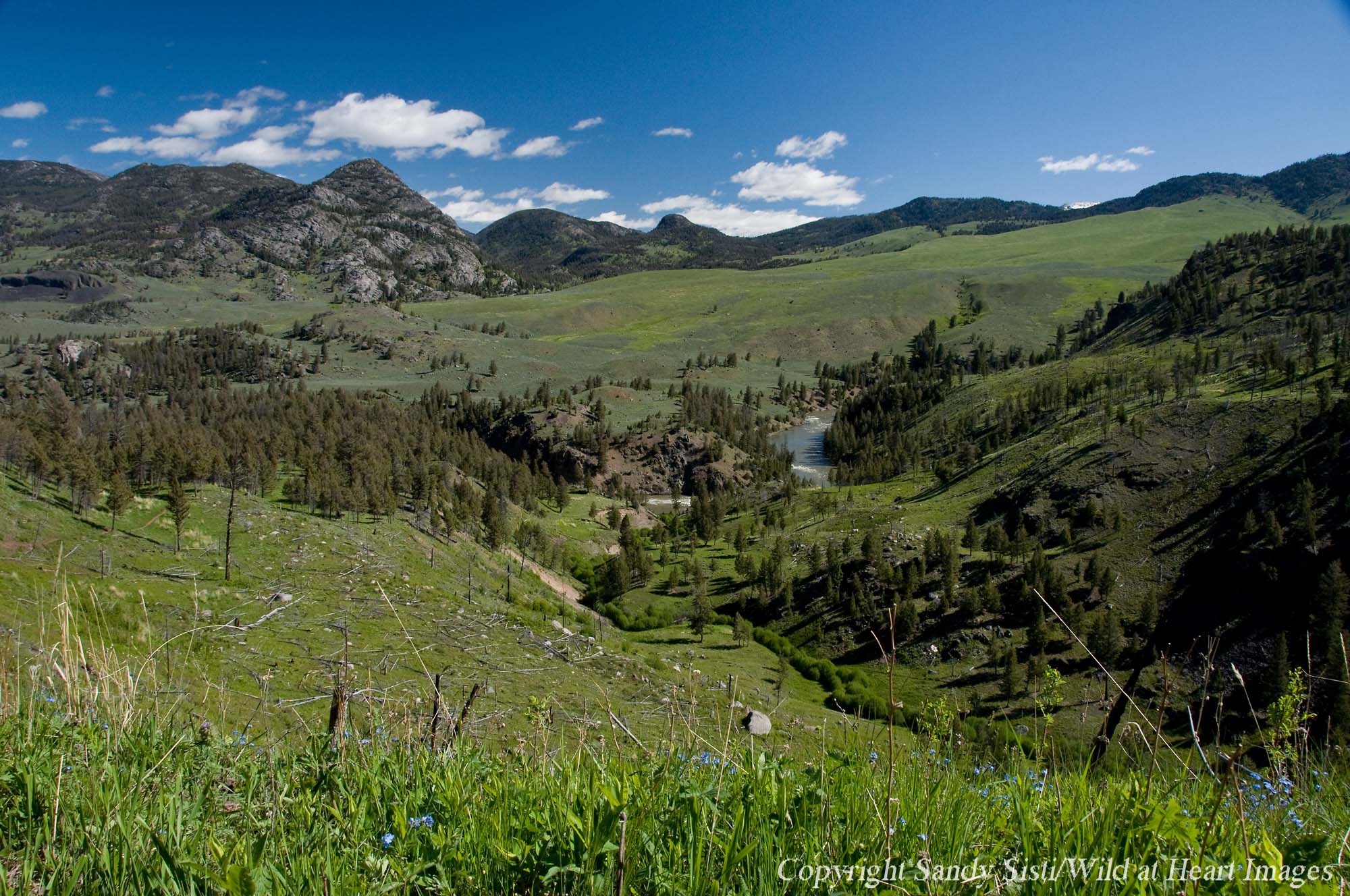
Parked for a Day is a user-submitted feature that lets readers share favorite activities in Yellowstone and Grand Teton national parks. Parked for a Day activities require parking the car, and can be done in a single day. Share your favorite Parked for a Day activity and we’ll feature it on Yellowstone Gate.
By Sandy Sisti
For a spectacular late spring Yellowstone hike, the Hellroaring Creek Trail is not to be missed. For some moderate effort, you will be rewarded with incredible scenery, wildflower-filled meadows and exceptional birding — as well as the possibility of encountering some of Yellowstone’s famed large mammals.

At the start of the trail, the elevation drops almost 700 feet through a series of switchbacks to a sturdy suspension bridge over the Yellowstone River. During your descent, the panoramic views in all directions are unparalleled; cone-shaped Hellroaring Mountain rises on your left and the vast meadow of the Buffalo Plateau stretches out to your right. At the height of wildflower season, this sunny slope is often blanketed with clusters of bright yellow arrowleaf balsamroot, pink sticky geraniums and baby blue alpine forget-me-nots.
After crossing the Yellowstone River, the trail meanders through the forested valley of Hellroaring Creek. This area is home to numerous migratory songbirds including western tanagers, yellow-rumped warblers and ruby-crowned kinglets. Bison, elk and mule deer are also common sights during this time of year, and you may even encounter the occasional moose or grizzly bear.
Hellroaring Creek was named in the 1860’s by A.H. Hubble, part of a group of prospectors searching for gold in Yellowstone country. During their expedition, Hubble ventured ahead of his party to scout the area. When he returned to his group, he was asked what kind of creek lay ahead and he replied: “It’s a hell roarer.” The name stuck, and for good reason. Fording the rapid waters of this creek in spring and summer makes it an extremely dangerous Yellowstone hike. Unfortunately, the footbridge over Hellroaring Creek washed out many years ago and has not been replaced. So when reaching the creek, your best option is to hike upstream an additional half-mile to cross at the stock bridge.
The forested area around the Hellroaring Creek stock bridge is a great place to sit back in the shade of the pines to take a break and enjoy the incredible scenery. If you’re out for a Yellowstone hike you can do in a single day, this is a good turnaround point. For those with a longer Yellowstone hike or overnighter in mind, Hellroaring Creek Trail can be followed to the northern boundary of the park where it connects with the Coyote Creek Trail and loops around Bull Mountain. Whichever is right for you, Hellroaring Creek Trail makes for a great backcountry destination.
Tips for a Yellowstone Hike in Bear Country:
Yellowstone National Park is bear country, so when hiking in the area, the following safety precautions are recommended:
- Carry bear spray and have it readily available.
- Be alert for bears.
- Make noise while hiking.
- Hike in a group, when possible.
- If approached by a bear, do not run.

Sandy Sisti is a wildlife and nature photographer based just outside the east entrance of Yellowstone, in the heart of the greater Yellowstone ecosystem. Sisti is also an avid hiker who enjoys exploring Yellowstone’s backcountry.
